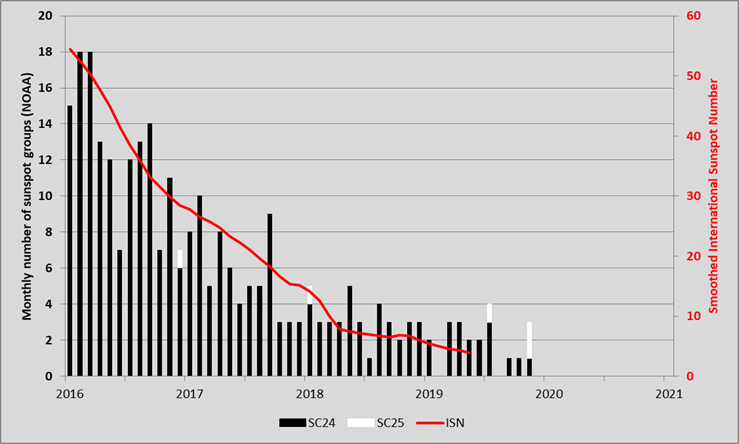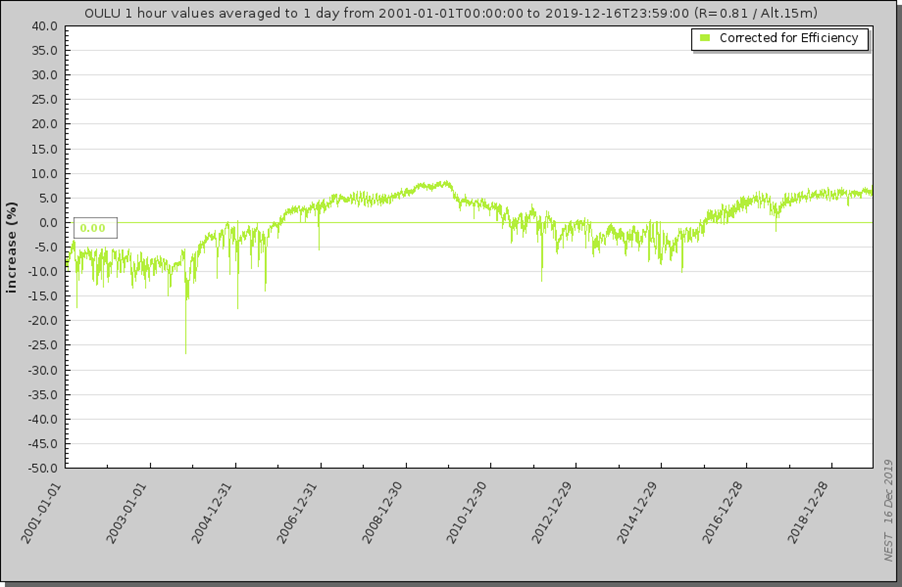Based on the *provisional* sunspot numbers as provided by SILSO, the Sun has been spotless since 14 November. Said otherwise, no sunspots have appeared for at least 33 consecutive days. This is longer than the longest spotless stretch of the previous solar cycle minimum, when the Sun was spotless from 31 July till 31 August 2009. The next "target" (in recent history) is the 42 days stretch from the solar cycle 22-23 minimum, when there were no sunspots observed from 13 September till 24 October 1996. That would propel the currently ongoing spotless stretch into the Top 10 of periods with spotless days since 1849, as shown in the table underneath.

Gradually, more and more sunspot groups from the new solar cycle (SC25) are showing. The graph below shows the monthly number of sunspot groups (having received a NOAA number) from SC24 (black) and from SC25 (white) since 2016. The red curve represents the smoothed monthly international sunspot number (SILSO). While the number of regions is low so close to the solar minimum, SC25 sunspot regions will gradually become more numerous than the SC24 regions eventually outnumbering those from the "old" cycle. The cycle minimum usually occurs within just a few months of this "break-even".

In view of the decreasing solar activity, the earth environment is exposed again to more high-energetic particles coming from outside our solar system, the so-called galactic cosmic rays (GCR - see this STCE newsitem). When entering the heliosphere, cosmic rays encounter a turbulent solar wind with an embedded heliospheric magnetic field. The higher the solar activity, the more intense and complex this magnetic field, and the more difficult it is for a particle to make it all the way to the Earth. When some finally arrive, they collide with particles in the Earth's atmosphere, creating a shower of secondary particles such as neutrons. These neutrons are detected by neutron monitors such as in Dourbes or various other sites around the world (Moscow, Oulu,...). The graph underneath shows the monthly Oulu neutron count relative to the average of the last 20 years. The neutron count is 6 percent above this average, almost as high as during the previous solar cycle minimum (8 percent). The GCRs are the cause of increased radiation and so the monitoring is important for aviation and astronauts.

Acknowledgements to the NMDB database (www.nmdb.eu), founded under the European Union's FP7 programme (contract no. 213007) for providing data, as well as to the Oulu neutron monitor webpage at http://cosmicrays.oulu.fi and the Sodankyla Geophysical Observatory.





